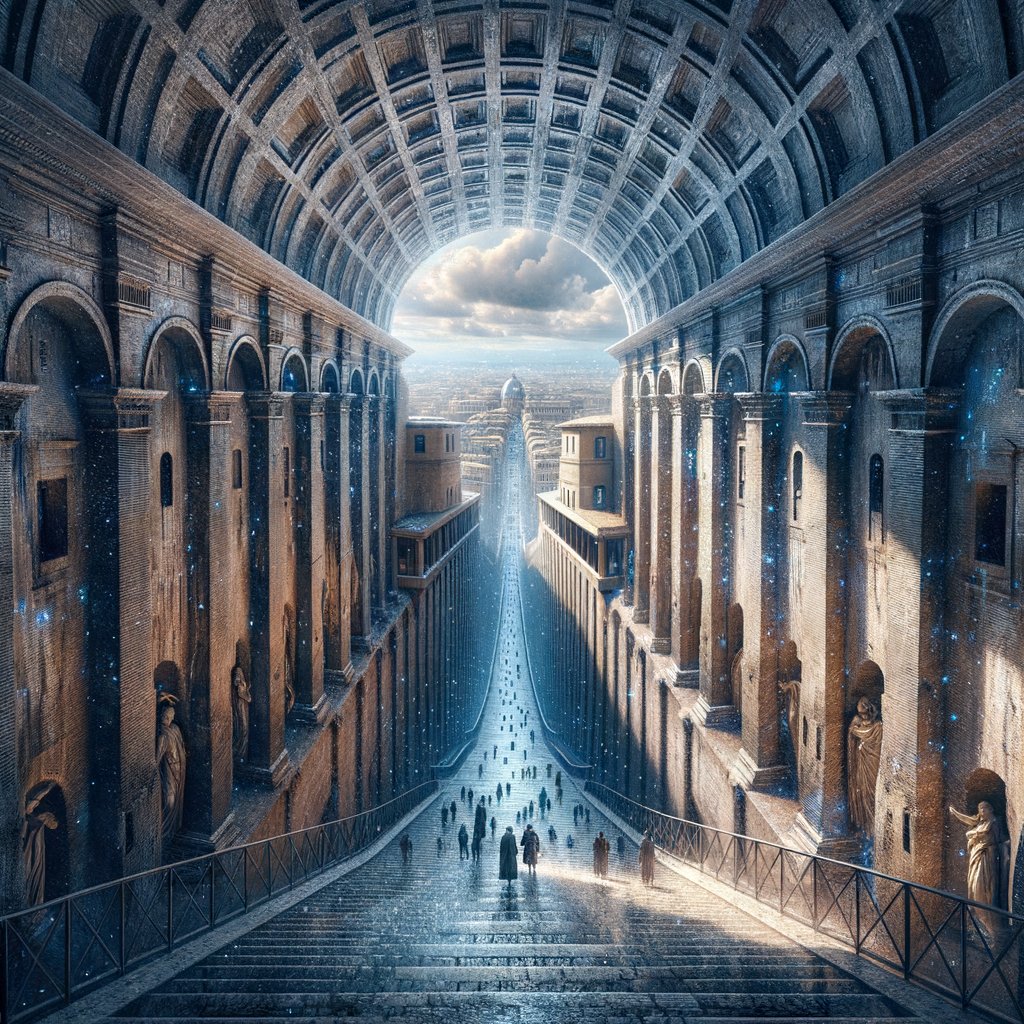Image created by AI
Rome's Ancient Papal Escape Route Reopens for Public Exploration
Embedded in the heart of Rome’s intricate historical narrative, the Passetto di Borgo stands as more than merely a secret corridor — it represents a pivotal chapter in the safeguarding of the papacy during times of turmoil. The re-opening of this fortified passage on Monday offers both locals and tourists a multifaceted journey through the passageway's evocative past and breathtaking vistas.
The construction of the Passetto di Borgo traces back to the 6th century, initially serving a defensive infrastructure for the Vatican. It was Pope Nicholas III in 1277 who envisioned and executed the transformation of this structure into an escape route, creating a direct, clandestinely fortified pathway between the Vatican and Castel Sant'Angelo.
The passage gained notoriety during the harrowing period of the 1527 Sack of Rome when Pope Clement VII narrowly escaped the marauding imperial troops. As chaos ensued below, the Pope used this very passageway to flee to the safe confines of the Castel Sant’Angelo, a fortress where he found refuge while Rome was under siege. This dramatic episode vividly highlights the passage’s critical role in the annals of Vatican history.
Visitors to the Passetto di Borgo today can explore both the upper and lower levels of this historic route. The upper open-air walkway offers stunning panoramic views across Rome, reflecting on a city steeped in resilience and beauty. In contrast, the lower level, covered and more confining, retains the ambiance of secrecy and haste which once defined its purpose.
Luca Mercuri, the director of Castel Sant'Angelo, expressed his enthusiasm for the reopening, noting that the public can now engage more personally with a piece of living history. The tours, structured to educate and inspire, provide access to both levels and paints a vivid picture of this vital escape route's history and functionality.
Beyond a mere touristic attraction, this reopening serves as a testament to Rome’s layered history and the resilience of its leaders. It underscores the depth of the narrative roots that run through this ancient city, offering citizens and tourists alike a bridge to historical vistas and stories that shaped not just Rome, but the world.
Tickets went on sale this Monday, promising visitors a unique walk through the corridors of time, echoed through the footsteps of medieval popes who once hurried along this path in the shadows of adversity.










